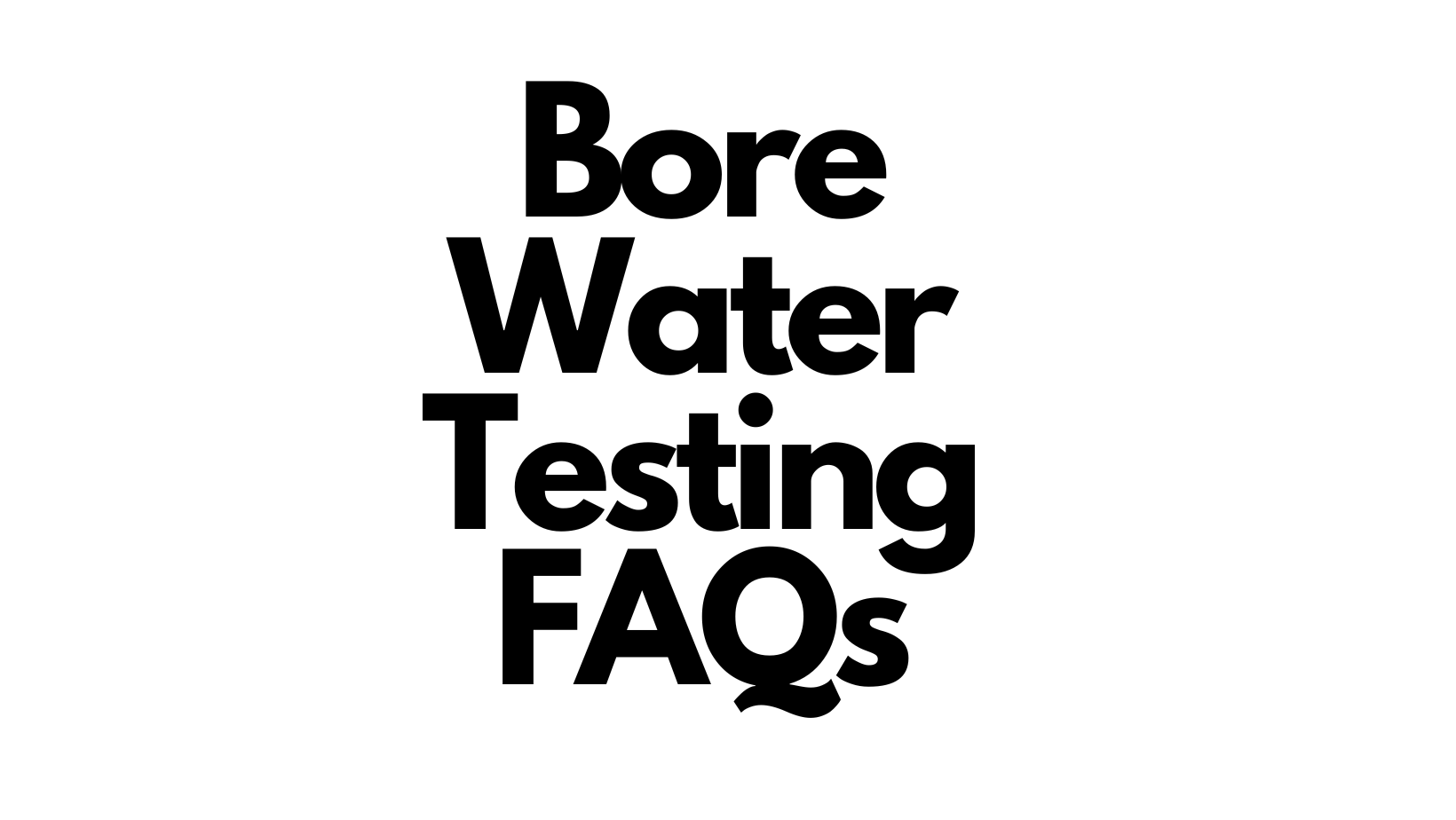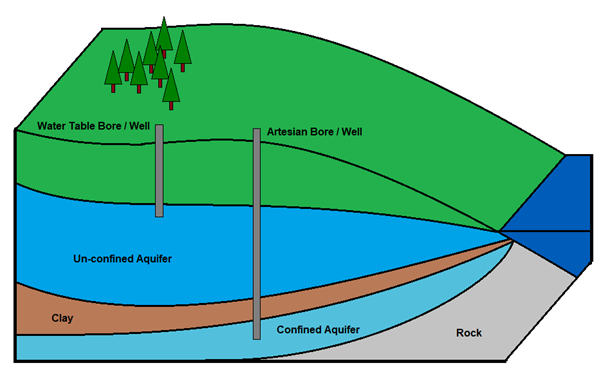
What is Groundwater?
Groundwater is water that can be sourced from below the earth’s surface. Some of the rain that falls on the land seeps into the ground and can dissolve minerals on its way. Excess water in the soil seeps down until it reaches a level where the spaces within sediments or rocks are saturated with water. This is called the water table. Water in the saturated zone below the water table is called groundwater.
Groundwater moves very slowly, compared to rivers and streams, because it has to flow through small openings in layers of soil, sediment and rock. A rock or sediment layer that is capable of yielding useful supplies of groundwater is called an aquifer.
Aquifers may be confined or un-confined. Unconfined aquifers are generally located near the land surface and have no layers of clay or other impermeable material above the water table. This means that unconfined aquifers can be recharged by rain or streams infiltrating directly through the overlying soil.
Confined aquifers have a layer of clay or other impermeable material that limits groundwater movement into or out of the aquifer. Because of these characteristics, confined aquifers tend to have more stable properties than unconfined aquifers.
Groundwater from aquifers can be brought to the surface by constructing bores or wells and installing a pump.

Examples of groundwater sources from confined and un-confined aquifers
Why should I test my Bore or Well?
NSW Health recommends that groundwater is not used for drinking, cooking and personal hygiene (including cleaning teeth and bathing) without testing and appropriate treatment including disinfection.
In rural areas groundwater can be a safe and reliable water source. Water from bores, spearpoints (shallow bore installations), springs or wells may be of high quality if the source is well maintained and protected. However, groundwater can be contaminated with:
- sewage
- animal wastes
- agricultural runoff (which may contain fertilisers and pesticides)
- polluted stormwater/floodwater
- industrial pollution
- seepage from rubbish tips and other chemicals.
- naturally occurring chemicals (e.g. arsenic)
- radioactive materials.
- Some groundwater may also be affected by hardness, salinity and other naturally occurring chemicals.
Groundwater contamination can move from the original source of contamination over a wide area or very deep underground. Contamination can persist for a long time as groundwater moves slowly and often lacks the natural biological, chemical and physical processes that help cleanse surface water (e.g. sunlight).
Knowing your water quality allows you to plan for water treatments to avoid problems caused by poor water quality. It is important to identify and correct water quality problems that may affect on-farm use and productivity.
Chemical changes cannot be detected by eye or smell and require chemical analysis to be detected.
If you have any doubts about the quality of water you intend to use for irrigation, stock, human consumption or other domestic purpose, you should get it tested.
How often should I test my Bore or Well?
Depending on the intended use of the water, the frequency of testing required will vary.
For household water supplies, both microbiological and chemical quality tests should occur prior to use, particularly where the previous history of the bore is unknown. After the initial analysis the bore water should be checked every 2 years and monitored for any undesirable changes in water quality. If at any stage there are changes in appearance or odour, further water quality testing is advised.
For private water suppliers such as caravan parks, schools, accommodation providers, community halls, recreational and sporting facilities, worksites, and home based businesses, NSW Health recommends that microbiological testing is performed monthly and chemical and physical testing is performed annually.
How do I collect a sample of my bore or well water?
Complimentary sample containers are available to collect at the laboratory or you can use your own.
Collect approximately 200mL of sample in a sterile glass or plastic container for microbiological testing. You can sterilise a glass jar by placing it in boiling water for 5 minutes and allowing it to cool down before filling. Sterilised containers should not be rinsed before filling with sample.
Collect approximately 500mL in a clean glass or plastic container for chemical and physical testing. The container should be rinsed twice with the water sample before filling completely so that there is no airspace at the top.
Samples should be clearly labelled with your name, sample ID and date and time of collection. Samples should be kept cool until delivered to the laboratory within 24 hours of collection.
How do I send samples to the laboratory?
Samples can be delivered to the Coffs Harbour Laboratory between 8am – 4pm Monday – Thursday.
Samples for microbiological analysis cannot be delivered on Fridays or the day before a public holiday.
A completed Chain of Custody must accompany the samples if using a courier or can be completed on sample receipt if you are delivering them yourself.
When and how will I receive my results?
Microbiological results are usually available next day.
All other results will be finalised within 7-10 working days but may be sooner depending on workload.
Once completed, results are sent to the email address provided on the Chain of Custody. Urgent results may be obtained over the phone or emailed as an interim report.
If you do not have access to email, a hardcopy of your results may be collected from the laboratory or sent by post to the postal address provided on the Chain of Custody.
How do I interpret my water test results?
Click here for more information on how to understand your bore water testing results.
